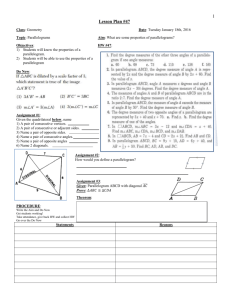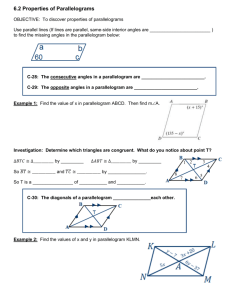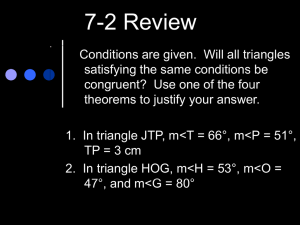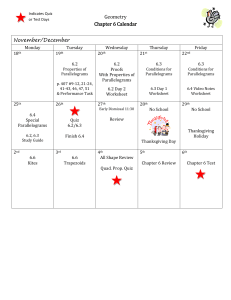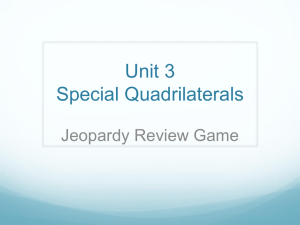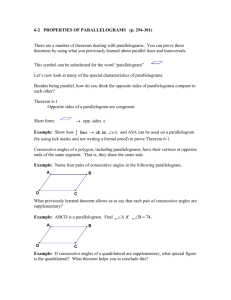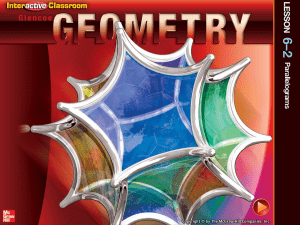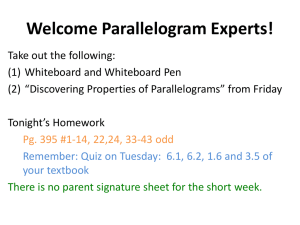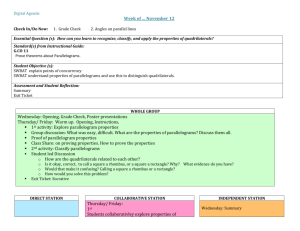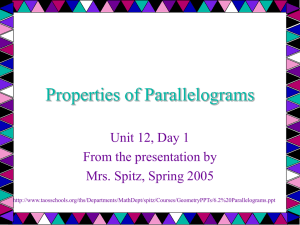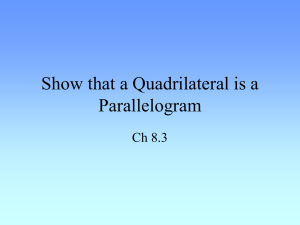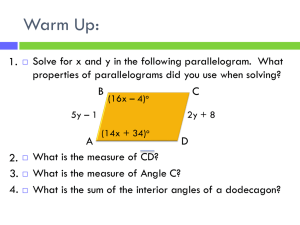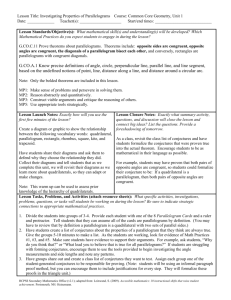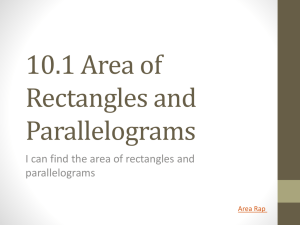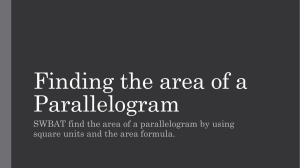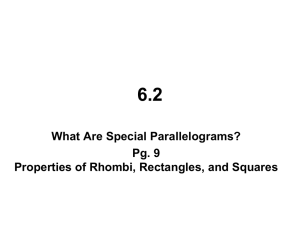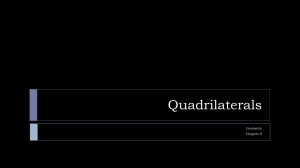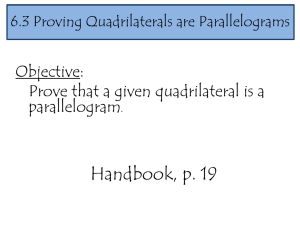Revised Geometry Lesson 6.3
advertisement
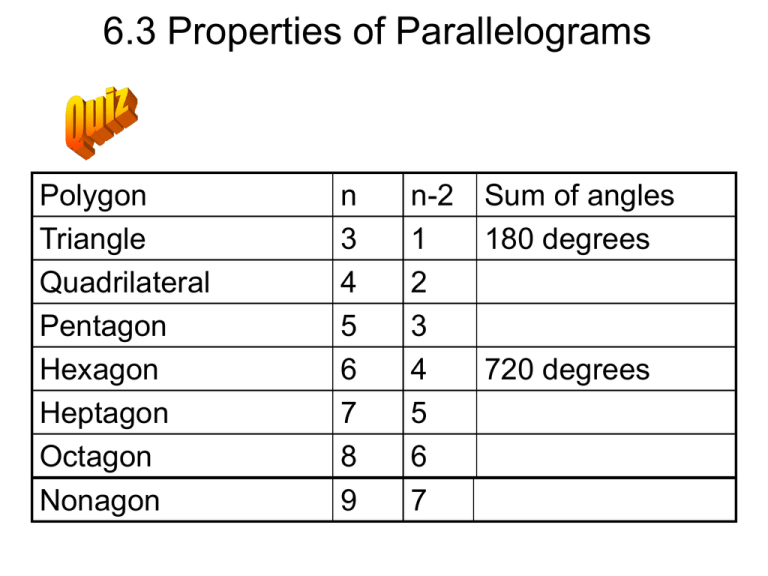
6.3 Properties of Parallelograms Polygon Triangle Quadrilateral Pentagon Hexagon Heptagon Octagon Nonagon n 3 4 5 6 7 8 9 n-2 1 2 3 4 5 6 7 Sum of angles 180 degrees 720 degrees 6.3 Properties of Parallelograms • Goal #1: • How to use properties of parallelograms to solve problems in geometry. • Goal #2: • How to use properties of parallelograms to solve real life problems. 6.3 Properties of Parallelograms Power Standard #8 Understand the properties, characteristics, and notation of geometric figures/solids to determine how they relate to one another. (1.3.2) [1.2, 6.1-6.3, 6.5, 6.6] Parallelogram • A parallelogram is a quadrilateral whose opposite sides are parallel. Lesson Investigation Part A - Instructions • In pairs, use a straightedge to draw two parallel segments on a piece of patty paper. Then draw two other parallel segments to form a parallelogram. • Place a second piece of patty paper over the first and copy the parallelogram onto the second. • By moving the copies around, what conjectures can you make about the properties of parallelograms. • You have ten minutes!!! Part A – Guiding Questions • How do the lengths of the opposite sides compare? • How do the sizes of the opposite angles compare? • How do the sizes of consecutive angles compare? Parallelogram Part A – Guiding Questions • How do the lengths of the opposite sides compare? • How do the sizes of the opposite angles compare? • How do the sizes of consecutive angles compare? Lesson Investigation Part B – Instructions • Draw or fold the two diagonals of the parallelogram. • Place a dot at their intersection. • You have five minutes!!! Part B - Guiding Questions • How do the segments of each diagonal compare? • What can be said about the intersection of the diagonals? • How many congruent triangles are formed within the parallelogram? Parallelogram Part B - Guiding Questions • How do the segments of each diagonal compare? • What can be said about the intersection of the diagonals? • How many congruent triangles are formed within the parallelogram? Properties of Parallelograms • THM 6.3: The opposite sides of a parallelogram are congruent. • THM 6.4: The opposite angles of a parallelogram are congruent. Properties of Parallelograms • THM 6.5: The consecutive interior angles of a parallelogram are 1 supplementary. m1 m2 180 2 THM 6.6: The diagonals of a parallelogram bisect each other. Find SR, ST , mPQR, mQRS , if PQRS is a ogram and mQPS 110 P 5 110 C. m PQR 70 D. m QRS 110 3 70 T 3 A. SR PQ 5 B. ST QT 3 Q 110 S 5 R Using Parallelograms to solve Real life problems • The San Francisco Bay Bridge, like many bridges, uses parallelograms in its structural design. • Engineers use properties of parallelograms to build and repair bridges. T heframeworkfor a railroadbridge is shown below. ____ ____ ____ ____ You knowonly thatED BC, AB EF, and m PER 130. 130 A. Are you given enough info to verify that EQ = QB? Yes! B. What are the measures of ERB and RBP? 50 130 Assignment!!! • • • • Pg. 283 11-23 odd, 27b-36 even, 42, 44.
